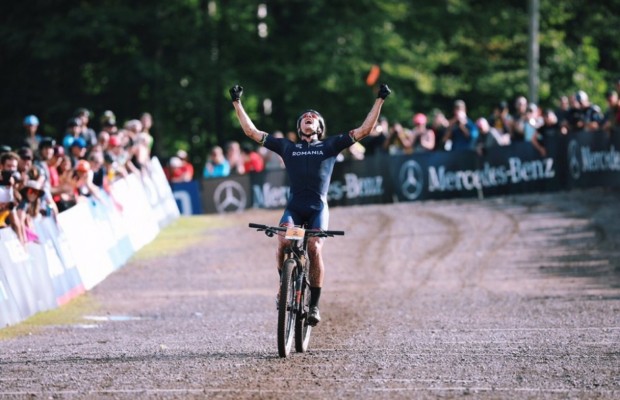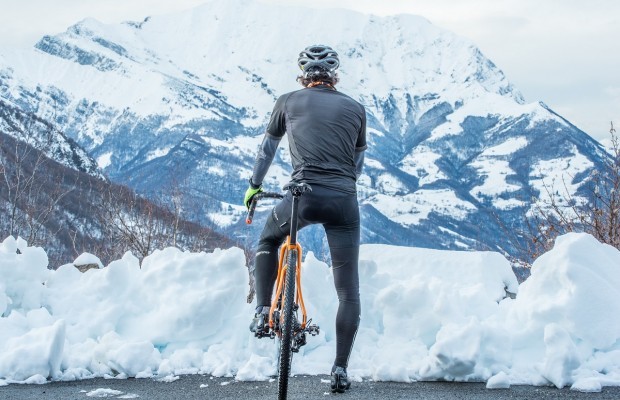Orbea: no other major bicycle brand these days has such a long history
No major bike brand today can boast such a long history. Although they didn't start out as two-wheelers, exactly. What started out as an arms industry in the mid-19th century ended up being dedicated to the most peaceful and civilised vehicle in the world, in one of those twists of fate. Today we bring you the fascinating history of Orbea; 180 years of the clan of gunsmiths that took cycling by storm. Do you want to know it? It's well worth it.

Orbea's origins: gun barrel or frame tube?
If the siblings Juan Manuel, Mateo, Casimiro and Petra Orbea had been told (by a time traveller, perhaps), when they founded their company, that their future lay in bicycles, they would have been quite confused. First and foremost, because that word didn't even exist yet ("bicycle?"). As they were undoubtedly well-informed people of their time, it is likely that they had heard of the draisine, that two-wheeled invention without pedals that had become fashionable 20 years earlier among the dandies of Germany, France and England.
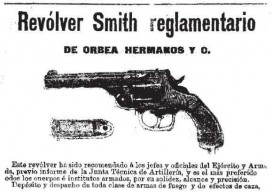
RECOMENDADO
But they would not have put too much trust in that. There, in the Basque Country, they had always done the same thing since immemorial times: boats and cannons. Ships on the coast, cannons inland, on the banks of the Deba. It was what their ancestor Juan Orbea, master gunner for Charles V back in the 16th century, had been doing 300 years before. And it was what they were going to dedicate their small workshop to in that manufacturing 'beehive' that was Eibar. It had always worked, and there was no reason why it should stop working now. And the truth is that they were right to think so.
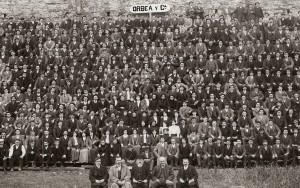
For almost a century, the pistol and revolver business went like a shot, so to speak. And it reached its peak during the years of the First World War. Spain remained neutral in the war, and this status enabled it to export to all the belligerent countries. So many factories doubled or tripled their production, hired workers (above you can see some of the more than 500 that Orbea had in 1913) and expanded their ships as if the war would never end. But it did end.
And, in 1919, in the midst of the pandemic (yes), they found themselves wondering what to do now that peace had broken out with all that steel, those installations and those skilled employees. There were proposals from peaceful industries for all tastes: prams, milling machines, presses, drills.... The answer? In Europe, a gadget called a bicycle, whose tubes were somewhat reminiscent of the barrels of pistols and shotguns, had been triumphing for some years. The perfect business, and almost virgin in Spain. So much so that, in the 1920s, the three main arms factories in Eibar (GAC, Orbea and BH) made the transition to the bicycle.
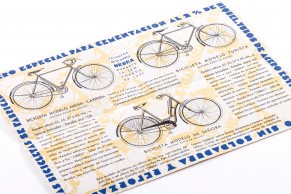
In 1931, Orbea already had 3 models in its catalogue: a 'racing', a 'touring' and a 'ladies' model. Of course, those were different times. They were ambitious, however, and soon began to sponsor some of the biggest names in Spanish cycling during the Republican era. Riders like the unjustly forgotten Mariano Cañardo, who still holds the record for the Volta a Cataluña, with 7 victories, as well as finishing 2nd in the first Vuelta a España (with an Orbea Super Profesional), behind Gustaaf Deloor, and 6th in the 1936 Tour de France.
Also the Biscayan Federico Ezquerra, who in the same year 36, while the first shots of the Civil War were being fired in Spain, won the first of many stages in the Tour de France for the Basque brand. It could be said that thanks to all this, today, the Basque Country is one of the most fanatical cycling regions in Europe.

The predecessor of the eBikes
After the forced interruption, Orbea made a strong comeback to the market in 1940, although post-war Spain was not in the mood for multi-coloured snakes and sporting parties. Models such as the Carrera Profesional, already with a 'modern' derailleur, showed what they were capable of, but their sales were concentrated on much more prosaic bicycles. These were boom years, when the company produced 85,000 units a year. In 1942, the ABC newspaper estimated that 250,000 of them were on the road in Spain.
Although the Orbea family was to go into decline shortly afterwards, it still enjoyed some success. Above all, in 1957 they bought the licence for Spain for the VéloSoleX, which was advertised as 'the bicycle that rolls by itself' or 'the cheapest scooter in the world'. This was an engine-powered bicycle invented in 1946 in France, and which reached 40 km/h. It sold 60,000 units in about 10 years.
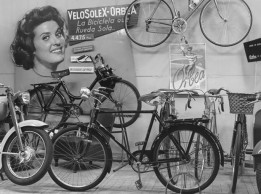
By 1969, however, with the advent of the Seat 600, the company had hit rock bottom, and went bankrupt. While the owners wanted to close down, there was still someone who believed in the ailing business: its own workers, who took over ownership and set up a cooperative. In 1971, they became part of the great Basque cooperative conglomerate, the Mondragón Group, which they are still part of to this day in 2022. And that is when Orbea's third and most glorious life began. From its new headquarters in Mallavia, barely 8 km from Eibar.
Its goal was to modernise, to leave behind the stigma of old-fashioned, heavy and slow bikes that it had been accumulating, to forge a new, young and fresh image for itself. And there was nothing better for that than to return to professional cycling, as in the 1930s, demonstrating that, in terms of quality, they could compete with any international brand. Thus, in 1984 their first team was born, led by Txomin Perurena and which from the first year had Spanish stars such as Peio Ruiz Cabestany and Jokin Mujika, a multidisciplinary rider (he did MTB, CX and road) ahead of his time. By the way, they had a women's squad, which was just as far-sighted.
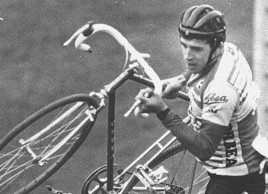
The crazy 80s and 90s: Perico's Vuelta, the MTB...
They proved that they were as good as any Italian or French manufacturer the following year, when they were able to sign the great promise of the moment: Pedro Delgado. And, as soon as he arrived, he re-invented himself by winning his first major stage race on board an Orbea. It was the 1985 Vuelta a España, the one he 'stole' from Robert Millar in a mythical ride on the way to his 'home', in Segovia's Destilerías DYC. And yes, that's Perico himself cyclocrossing, yes.
Those were the days of legendary models, such as the Donosti touring bike, the Moncayo road bike, the folding Yovana or the Furia, with which Orbea entered the 1980s fashion for bikes inspired by motocross. But, above all, an important step forward came with the Sherpa, its first and very successful MTB model. Thanks to all these successes, the brand re-entered the collective imagination of the Spanish people; and for many, it is still a name that tastes of childhood and freedom.
In 1994, just as Perurena's team was about to disappear, its moral 'relief' arrived, with the birth of the Euskadi Foundation, which would mark Orbea's destiny forever. Two years earlier, the brand had also been competing in MTB with Jokin Mujika and, throughout the decade, they realised that, if they wanted to consolidate themselves in a market as demanding as that of this discipline, they had to form an increasingly ambitious team.

Absalon, Samu Sanchez, Orca... the post-2000 success stories
From 1998 onwards, but especially in 2000, things took a turn for the better for the Mallavia-based company. That was the start of its internationalisation strategy, with which it went from selling almost exclusively in Spain to having subsidiaries in countries such as the United States, France, Germany and Australia. In 2001, Euskatel-Euskadi arrived for the first time at the Tour... and, against all odds, managed to win in Luz Ardiden thanks to that wiry, gangly climber called Roberto Laiseka.
The Orange Tide was unleashed, the popular movement that even today accompanies the revived Euskaltel, and which would see the triumphs of Iban Mayo, Samuel Sánchez and Igor Antón follow one after the other. All of them achieved them on a new carbon model destined to make history: the Orca, which emerged in 2003 and is still going strong almost 20 years (and many reincarnations) later.
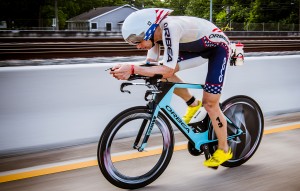
In the MTB field, stars such as Marga Fullana (2002) and Jean-Christophe Peraud (2006) began to join the team. But, above all, in 2007 they made a splash by signing the best rider in the world, the great Julien Absalon, who stayed with the Basque team for no less than 5 years. Undoubtedly, one of the best teams in the history of the sport.
And so, the magical year 2008 arrived. The year of the Beijing Games. Because it is not often that the winners in road and MTB have the same brand. But that's how it happened. Gold for Samuel Sánchez, gold for Absalon... and, as a gift, silver also in XCO for Péraud. As if that wasn't enough, in those years their triathlon bike, the Ordu, was also born and made its debut by winning the Hawaiian Ironman, ridden by none other than Craig Alexander. Today, it is ridden by the greatest Spaniard of all time, Javier Gómez Noya.

The consolidation phase
The Basque brand's most recent period, from 2010 to the present, has been one of expansion, building on what has already been started. We have seen models such as Alma and Oiz consolidate their position among the best mountain bikes in the world, while at the same time new products have appeared for specific segments, such as the Rallon for enduro and the Occam for trail.
They have also entered the promising e-Bike sector, both urban (the Katu-E 30) and MTB (there's the Rise). And in gravel, with the spectacular Terra. In addition, although they continue to sponsor teams, such as KMC Orbea, Orbea FOX Enduro or the Orbea Factory Team, they are increasingly involved in events: the Orbea Monegros, the Klasika Bilbao Bizkaia...
If all of this (up to 3 lives and countless experiences) fits into 180 years... who knows what the next decades will bring in the history of these gunsmiths who one day decided to take cycling by storm? When their second centenary is celebrated in 2040 (not long now), will we be talking about Orbea's fourth life?

